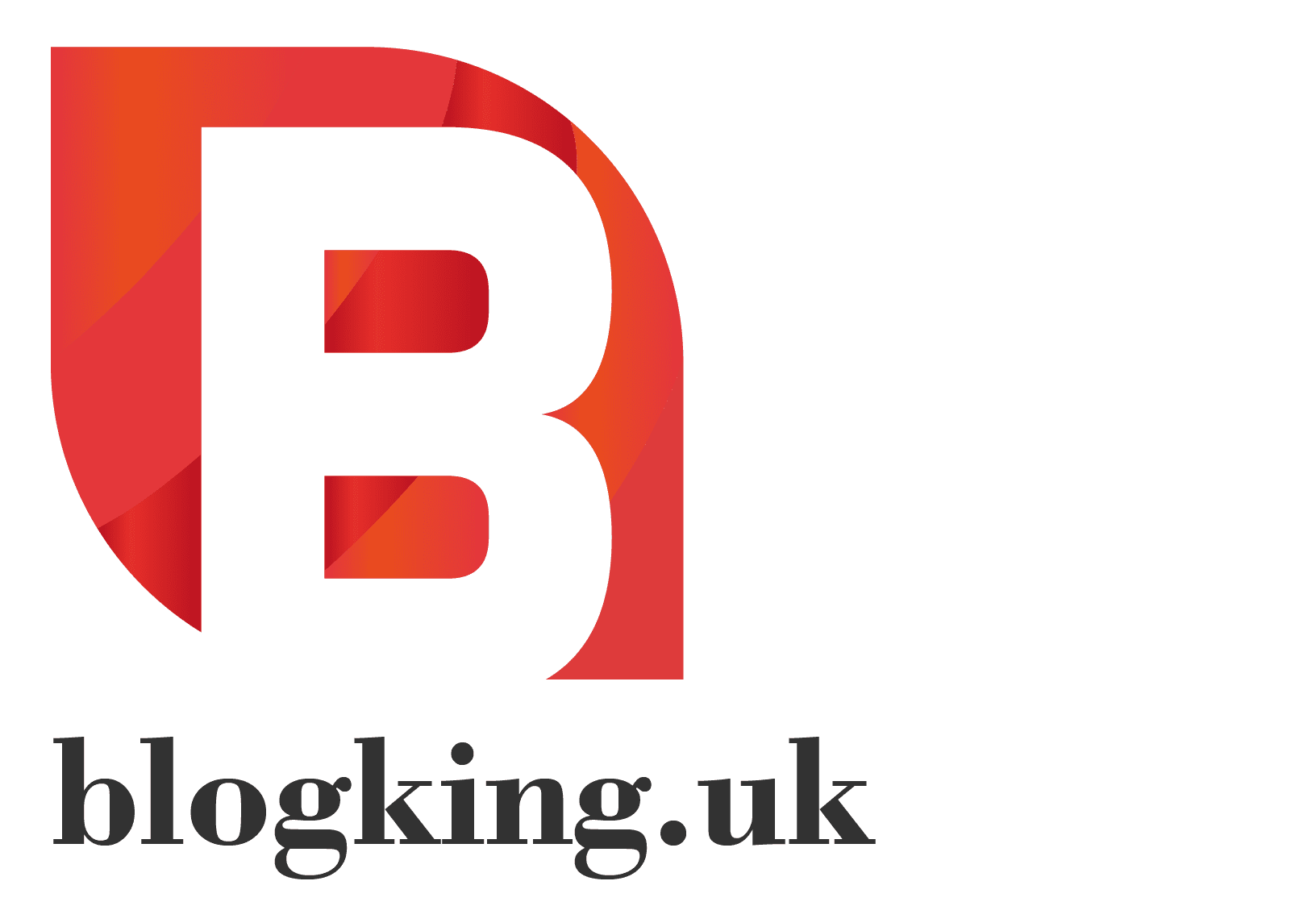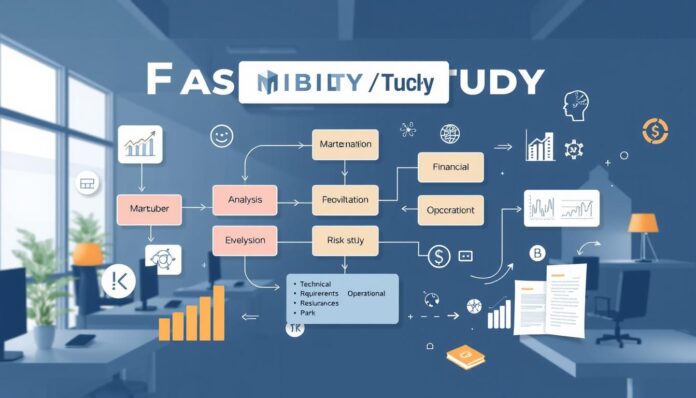Ever wondered why great business ideas often fail to take off? The key often lies in a critical step: the feasibility study. This detailed check can make all the difference between success and failure. Yet, many overlook its importance. In this guide, we’ll explore how to conduct a feasibility study for a new business. We’ll look at its benefits and share methods to help your project succeed.
Starting a feasibility study is vital in project management. It assesses if a business idea is viable by looking at technical, economic, legal, operational, and time factors. This helps us understand the challenges and opportunities of new ventures. A good feasibility study can boost project success, even if we can’t measure it exactly. So, learning how to do this well can save your organisation from wasting money and avoid bad decisions.
Table of Contents
Key Takeaways
- A feasibility study evaluates critical aspects of a business proposal, including market and financial viability.
- Conducting an initial market assessment can help avoid costly mistakes later in the feasibility study process.
- Involving experienced consultants can provide valuable insights and enhance the credibility of the study.
- It’s important to consider both internal constraints (like budget and resources) and external factors (such as regulations and environmental considerations).
- A thorough feasibility study should address all relevant issues to keep things logical.
- A single mistake in a feasibility study could risk the whole project, showing the need for carefulness.
Understanding the Concept of a Feasibility Study
A feasibility study is key for any big project. It checks if a project can work with the resources and time we have. It also looks at how much money it might make.
This study helps us make smart choices. It’s based on deep research and predictions.
Definition and Purpose
A feasibility study checks if a project can be done well. It looks at resources, time, and how much money it might make. It helps us see if a project is worth it.
This study looks at the project’s scope, costs, and how much money it might make. It also checks the market.
Key Elements of a Feasibility Study
There are important parts to a feasibility study. These parts help us know if a project will work:
- Executive Summary: A quick summary of the study’s findings.
- Product or Service Description: What the project will offer.
- Market Analysis: Looking at market trends and what customers want.
- Operational and Legal Considerations: Checking if it can be done legally and logistically.
- Financial Projections: Guessing costs, earnings, and profits.
- Technological Factors: Looking at the tech needed for the project.
By looking at these parts, we get a full picture of the project. We see its good points and risks. This helps us make better choices.
Using special planning methods, like reflective planning and tracking progress, makes the study better.
| Feasibility Study Component | Description |
|---|---|
| Executive Summary | Provides an overview of key findings and recommendations. |
| Market Analysis | Examines market trends, demand, and competition for the product or service. |
| Financial Projections | Includes estimations of costs, revenues, and expected return on investment. |
| Operational Considerations | Covers logistics and operational capabilities necessary for project execution. |
| Legal Considerations | Identifies legal requirements and regulations impacting the project. |
By understanding a feasibility study, we’re ready for projects. We know what it takes to succeed.
Importance of Conducting a Feasibility Study
Starting a new business project needs a feasibility study. It gives key insights into money planning and market trends. This helps shape good strategies. Knowing the benefits of conducting a feasibility study boosts project management and decision-making.
Benefits for Project Managers
Project managers get a lot from detailed feasibility studies. These studies check if a market is right before big investments. They spot possible problems early.
Feasibility studies help managers make goals clearer and projects more likely to succeed. This leads to better project outcomes.
- Up to 30% of projects fail due to poorly defined scopes, which feasibility studies help clarify.
- These studies can reduce project costs by 15-20% through early identification of possible issues.
- Companies conducting feasibility studies report a 40% higher success rate in project completion.
Preventing Risky Investments
Feasibility studies are key in avoiding risky investments. They look at project costs, market demand, and competition. This helps avoid unprofitable paths.
Spotting logistical and financial hurdles early leads to smarter investment choices.
- Research shows 70% of project failures come from unexpected challenges that feasibility studies can reveal.
- Also, 68% of companies using risk assessments in their feasibility studies successfully manage major project risks.
- Investing in feasibility assessments often gets better financial support from lenders and investors. This ensures projects are well-funded.
Types of Feasibility Studies
It’s important to know about the different types of feasibility studies. Each one gives unique insights. This helps spot risks and benefits of a project.
Technical Feasibility
Technical feasibility looks at if a project can be done with current tech and skills. It checks if the tools and systems needed are available. Key things to think about are:
- Availability of technology and resources
- Compatibility with existing systems
- Potential technological risks
Financial Feasibility
Financial feasibility looks at the money side of a project. It checks if the costs match the expected benefits. A good study looks at the return on investment (ROI) to see if it’s worth it. Important points to consider are:
- Initial investment costs
- Projected revenues and expenses
- ROI expectations, usually over 20%
Market Feasibility
Market feasibility checks if there’s demand for what the project offers. It looks at the competition and how much market share it could get. By understanding the market, decisions can be made wisely. Key things to look at are:
- Total addressable market (TAM)
- Market trends and consumer behaviour
- Competitor strategies and positioning
Operational and Legal Feasibility
Operational feasibility checks if the team can do the project. It looks at the people, processes, and systems needed. Legal feasibility makes sure the project follows the law. It checks things like:
- Staffing and training requirements
- Necessary permits and certifications
- Risk of legal challenges affecting project implementation
How to Conduct a Feasibility Study for a New Business
Starting a new business? It’s key to follow the right steps for a feasibility study. This detailed approach helps understand if your idea works and what might get in the way. First, do a quick check to spot any big problems before you dig deeper.
Steps for Conducting a Feasibility Study
The study process has several important stages:
- Do a quick check to find any big problems.
- Look closely at the market to see what customers want and who you’re up against.
- Check if it makes financial sense by looking at costs, income, and profits.
- See if you have the right skills and resources to do the project.
- Put all the findings together and make a report for those who matter.
Each step helps get a full picture of your project’s chances. Projects that do these steps well often get more funding.
Preliminary Analysis and Its Importance
The preliminary analysis is the base of the study. It helps figure out key things like how you stand out, what tech you need, and if you can afford it. This first step is not just a formality. It shows if it’s worth going all in on the full study.
If big problems show up, it might be better to rethink or change your idea. This early check helps make better choices. It means the study can focus on important stuff like who your customers are and who your rivals are. For more on market research, check out this resource.
In short, a good feasibility study starts with careful planning. This helps businesses make smart choices and set up for success.
Gathering and Analysing Data
Gathering and analysing data are key to a good feasibility study. By collecting and understanding data, we can see if a project is financially sound. This helps us make smart choices.
Market Research Techniques
Good market research is vital for knowing if there’s demand for our idea. We use surveys, focus groups, and demographic analysis to learn about what people want. Without solid research, 65% of new projects fail.
This shows how important it is to get accurate data. It helps us see if our idea is worth pursuing and saves us from wasting resources.
Financial Projections
Clear financial projections are essential for understanding costs and earnings. They include detailed studies and forecasts, showing our financial plan and expected returns. A good project should aim for at least a 20% return on investment.
Knowing how cash flows will affect us is key to success. It helps us plan better. For more on this, check out financial projections for better business planning.
| Data Aspect | Importance |
|---|---|
| Market Research Techniques | Identifies demand and consumer trends |
| Financial Projections | Assesses financial viability and predicts ROI |
| Cost-Benefit Analysis | Justifies resource allocation and project feasibility |
| Demographic Analysis | Encourages targeted marketing strategies |
| Surveys and Focus Groups | Provide direct consumer feedback |
Establishing a Comprehensive Feasibility Study Template
Creating a detailed feasibility study template is key to evaluating business plans. It includes important parts that help in a deep analysis. Using a feasibility study checklist keeps us focused and covers all important areas well.
Essential Components
A good feasibility study template has several main parts:
- Executive Summary: A brief summary of the study’s goals, findings, and advice.
- Product or Service Description: Detailed info on what’s being offered, including what makes it special.
- Technical Considerations: Looking at technology needs, infrastructure, and how things will work.
- Market Surveys: Research on who the target audience is and who the competitors are.
- Operational Capability Assessments: Checking if there are enough resources, staff, and how to handle logistics.
- Project Timelines: Setting out when things need to be done and what to expect.
- Financial Forecasts: Predicting costs, income, and if the project will make money.
Using a Feasibility Study Checklist
Using a feasibility study checklist makes things easier. It acts as a guide to make sure we don’t miss anything important. By ticking off each point as we go, we make sure our analysis is complete and organized. Important things to include are:
- Market analysis and user research.
- Checks on if we follow the rules.
- Estimating costs and if it will be profitable.
- Looking at if we have the right resources and how to manage them.
- Assessing risks and how to deal with them.
Conducting a Successful Feasibility Study
To get the best results in project management, it’s key to follow the right steps in a feasibility study. Project managers need to talk clearly with everyone involved to make sure everyone’s views are heard. Doing deep research and writing down all the findings is also vital for making smart choices.
Checking each part of the study regularly keeps the focus on the goals and helps avoid problems.
Best Practices for Project Managers
Using the best practices for feasibility studies can make a project much more likely to succeed. These include:
- Using detailed data analysis to boost success rates.
- Managing resources well to avoid wasting money by 30% to 50%.
- Finding and fixing risks early to cut costs by up to 20%.
- Doing lots of market research to find new ways to make more money by up to 15%.
- Talking to stakeholders in 10 to 15 meetings for big projects.
Common Pitfalls to Avoid
When doing feasibility studies, it’s important to know the common mistakes that can harm success. Not listening to all stakeholders can mean missing out on important insights, which can make the project not meet market needs. Also, not getting all the data can increase risks and lead to bad assessments.
By staying alert and informed, we can steer clear of these pitfalls and make the study stronger.
If you want to learn more about good budget planning for feasibility studies, check out budget allocation and resource planning for useful tips.
| Feasibility Aspect | Impact on Project | Risk Mitigation |
|---|---|---|
| Market Research | Increases success probability by 45% | Early identification of market needs |
| Risk Analysis | Highlights 80% of project threats | Facilitates proactive contingency planning |
| Financial Analysis | Provides 20-30% more accurate ROI projections | Aids in strategic investment decisions |
| Stakeholder Engagement | Enhances buy-in and alignment | Reduces conflict and increases support |
Interpreting the Results of the Feasibility Study
Understanding the results of a feasibility study is key to a project’s success. It helps us make smart choices based on the data we’ve collected. This way, we can share vital information with those who can help make the project happen.
Making Informed Decisions
We start by looking at market size, operational feasibility, and costs. Knowing these details helps us see what’s working and what’s not. For example, a tech startup might find out there’s a big market interest and specific tech needs.
This knowledge shapes our strategy and helps spot risks early. It’s all about making the right moves based on what we’ve learned.
Obtaining Stakeholder Buy-in
Getting stakeholders on board is essential for any project. A detailed report on the study’s findings builds trust. It shows the project’s worth by sharing data like expected earnings and staffing needs.
For instance, if a bakery shows there’s a big demand for gluten-free goods, investors might be more likely to support it. Clear and logical presentation of data leads to better discussions and support.
Working together makes the project stronger and more flexible. It ensures everyone is on the same page. This way, we can use our findings and stakeholder views to ensure the project succeeds.
| Key Element | Description |
|---|---|
| Market Size | Validation of market assumptions through surveys and focus groups. |
| Operational Feasibility | Selection of optimal locations to minimise delivery times and costs. |
| Cost Analysis | Calculation of startup expenses to avoid financial shortfalls. |
| Revenue Projections | Estimation of first-year revenues based on competitive analysis. |
| Risk Identification | Recognition of possible risks and making backup plans. |
Real-World Examples of Feasibility Studies
Looking at real-world feasibility studies shows how important they are. They help make big decisions for big projects. These studies give insights that help everyone involved and lead to success.
Case Study: University Science Building
The university science building case study is a key example. It looked at updating an old building. The study checked the budget, how it would improve education, and its long-term benefits.
This detailed study proved the project was worth doing. It made sure the building would meet today’s and tomorrow’s academic needs.
Case Study: High-Speed Rail Project
The high-speed rail project case study was complex. It looked at if the project could make money and if it had the right technology. The study checked the finances to see if it was a good investment.
It also looked at how the project would affect the environment and the area’s infrastructure. This ensured the project would meet today’s needs and help the region grow. These examples show how vital feasibility studies are for big projects.
Conclusion
A feasibility study is key in project management. It helps us make smart choices about starting new ventures. It shows us the risks and challenges ahead.
By understanding these studies, we can start projects with confidence. A good feasibility study improves our planning. This boosts our chances of success in a competitive market.
Looking ahead, a solid feasibility study needs careful market research and financial forecasts. It gives us real insights to guide us. Without it, nearly 70% of businesses struggle when expanding.
By following best practices, like regular reviews and risk assessments, we can face market changes better. This makes our ventures stronger against unexpected problems.
At the end of the day, this conclusion on the feasibility study process shows our journey to making informed decisions. We can start new business ideas with confidence. And create products that really connect with our audience, setting us up for lasting success.
FAQ
What is a feasibility study?
A feasibility study checks if a business idea can work. It looks at technical, economic, legal, operational, and time factors.
Why is conducting a feasibility study important?
It’s key to check if a market exists and spot challenges early. It helps make informed decisions and reduces financial risks.
What are the key elements included in a feasibility study?
It includes an executive summary, product or service details, and market analysis. It also covers operational and legal aspects, financial forecasts, and technology.
What types of feasibility studies are there?
There are technical, financial, market, and operational and legal studies. Each looks at different aspects of a project’s viability.
What are the initial steps for conducting a feasibility study?
First, do a preliminary analysis to spot obvious hurdles. Then, do detailed market and financial studies, and check technical and operational feasibility.
How can I gather data for my feasibility study?
Use market research like surveys and focus groups. Also, look at trends and competition to understand demand and revenue.
What should be included in a feasibility study template?
Include an executive summary, product or service details, and technical aspects. Also, market assessments, operational capability, project timelines, and financial forecasts.
What best practices should I follow for a successful feasibility study?
Keep communication clear with stakeholders. Do thorough research and document findings well. Regularly review each part to stay focused and manage risks.
How do I interpret the results of my feasibility study?
Analyse the data against your criteria. Look at strengths and weaknesses. Then, share your findings clearly to get stakeholders on board.
Can you provide examples of real-world feasibility studies?
Yes! For example, the University Science Building project looked at modernising facilities. The high-speed rail project checked market viability and financials for regional development.







